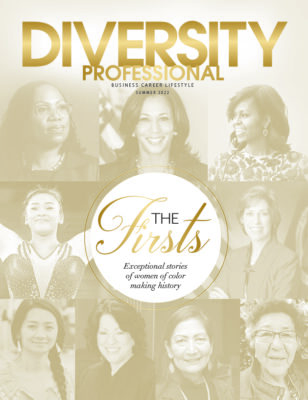Giving Supplier Diversity The Business
How Tarrance Frierson leads Southern California Edison’s supplier diversity program.
Growing up, Tarrance Frierson’s grandmother would often tell him, “Closed mouths don’t get fed.” Never a wallflower himself, as head of supplier diversity and development for Southern California Edison (SCE), he’s now teaching small and diverse businesses his grandmother’s lesson so that they can be successful, too.
“It’s all about relationships. Far too often small and diverse businesses focus solely on the contract, sometimes at a great cost. Yes, contracts are important. However, growing and sustaining business involves so much more than just winning contracts,” explains the effortlessly energetic Frierson. “It’s about evaluating each opportunity, building relationships, partnering to add value, and negotiating. Excited about the contract award, some firms simply sign on the dotted line and miss the option to negotiate which can be fatal for a business, especially when it results in lengthy payment terms. Owners have shared that they do not feel empowered or worry about losing the opportunity out of fear of asking for too much. We teach them to read every contract carefully and to negotiate the terms and conditions that work best for their business.”
That’s just one example of SCE’s comprehensive approach to preparing small and diverse businesses to be an asset for the organization and for themselves. Founded in 1886 and a subsidiary of Edison International, SCE’s nearly 14,000 employees supply much of the electricity for Southern California. That means more than 14 million people in a roughly 50,000-square-mile radius depend on SCE to power their lives. And in terms of diversity and inclusion, SCE does quite a lot more.
In 2019, for example, SCE spent $2.21 billion (40%) with more than 650 diverse suppliers. In addition, they sponsored/supported more than 120 outreach events and 70 workshops with more than 1,500 participants representing 1,200+firms. And that’s just the briefest overview. Drill down and you find an exhaustive supplier diversity program that provides everything from meaningful mentoring to innovative development to targeted outreach, and much more. They partner with numerous community and advocacy groups covering the spectrum of the diverse supplier world. This scope is not lost on Frierson. And having this big of a playing field empowers him and his team to bring SCE’s message of diversity and inclusion to the world in a very personal way.

“There is a tendency to focus only on ‘the spend with supplier diversity programs.’ When people do that, it’s easy to lose sight of other value-added program components that can be more meaningful to small and diverse businesses. We want to help develop their capabilities, increase their capacity, and grow their competitiveness. Yes, the numbers are important; we need metrics for measurement. But my team always sees this as doing well by doing good for everyone involved.”
That affirming world view is not theoretical for Frierson. He lives it. And he always has. A leader in the supplier diversity space for nearly a decade, Frierson is a natural fit for his leadership role. But, surprisingly, supplier diversity was not on his radar when he began his career.
“I landed at SCE and had been here for eight or nine years when I stumbled into supplier diversity. A friend within SCE called and said, ‘There’s a job I think you should consider.’ I was ready for a change, so I applied and got the job. But when I went to my first conference, the National Minority Supplier Development Council conference, and I saw 7-8,000 people, so many diverse business owners, on the trade show floor—well, that did it. It blew my mind, an opportunity to combine my passion for helping others with delivering business value.”
He shares, “I was raised to pay things forward and help others. Even before supplier diversity, I organized SCE’s campaign with the United Negro College Fund and raised almost half a million dollars in less than four years. I volunteer in the community through my church. From a values standpoint, combined with my natural business inclination, supplier diversity proved to be a perfect fit. And when I got into it, I got very into it. Now, I love finding the connection points between supplier diversity and business. Yes, there’s a social value, a feelgood component, and a moral imperative in supplier diversity, but SCE is a business. We have customers who pay rates. So, the business value is just as important and must be realized concurrently with the social responsibility. The great thing about supplier diversity is that, ultimately, it is good business.”
And Frierson is making that case quite compellingly. For the last seven years, SCE has achieved greater than 40% spending with their supplier diversity program. With characteristic candor, Frierson is quick to accept the acknowledgement and offer the underlying reality with it, “Getting to 40% can be easy. Maintaining 40% over the years is the challenge.” His grandmother would be most deservingly proud.









